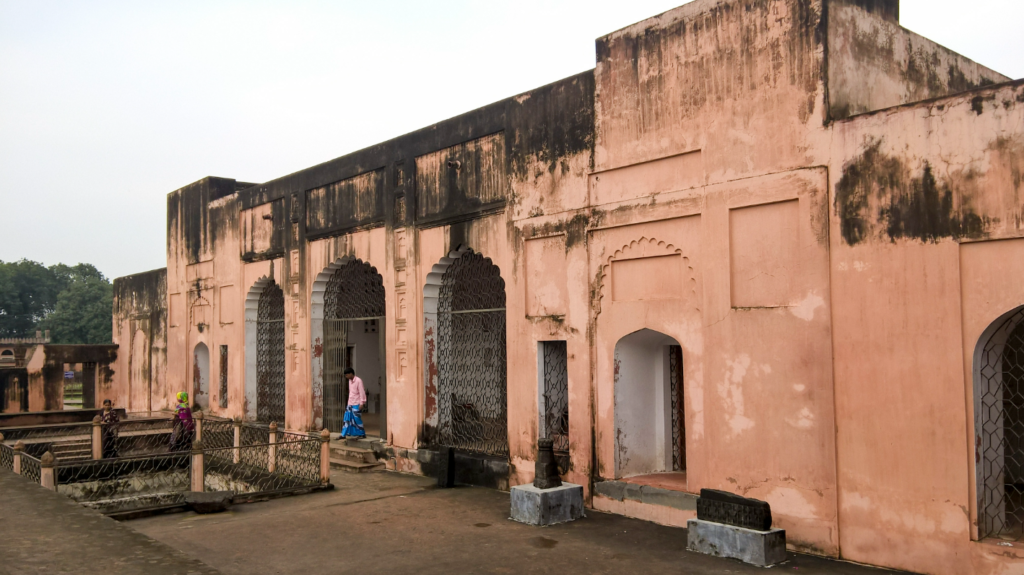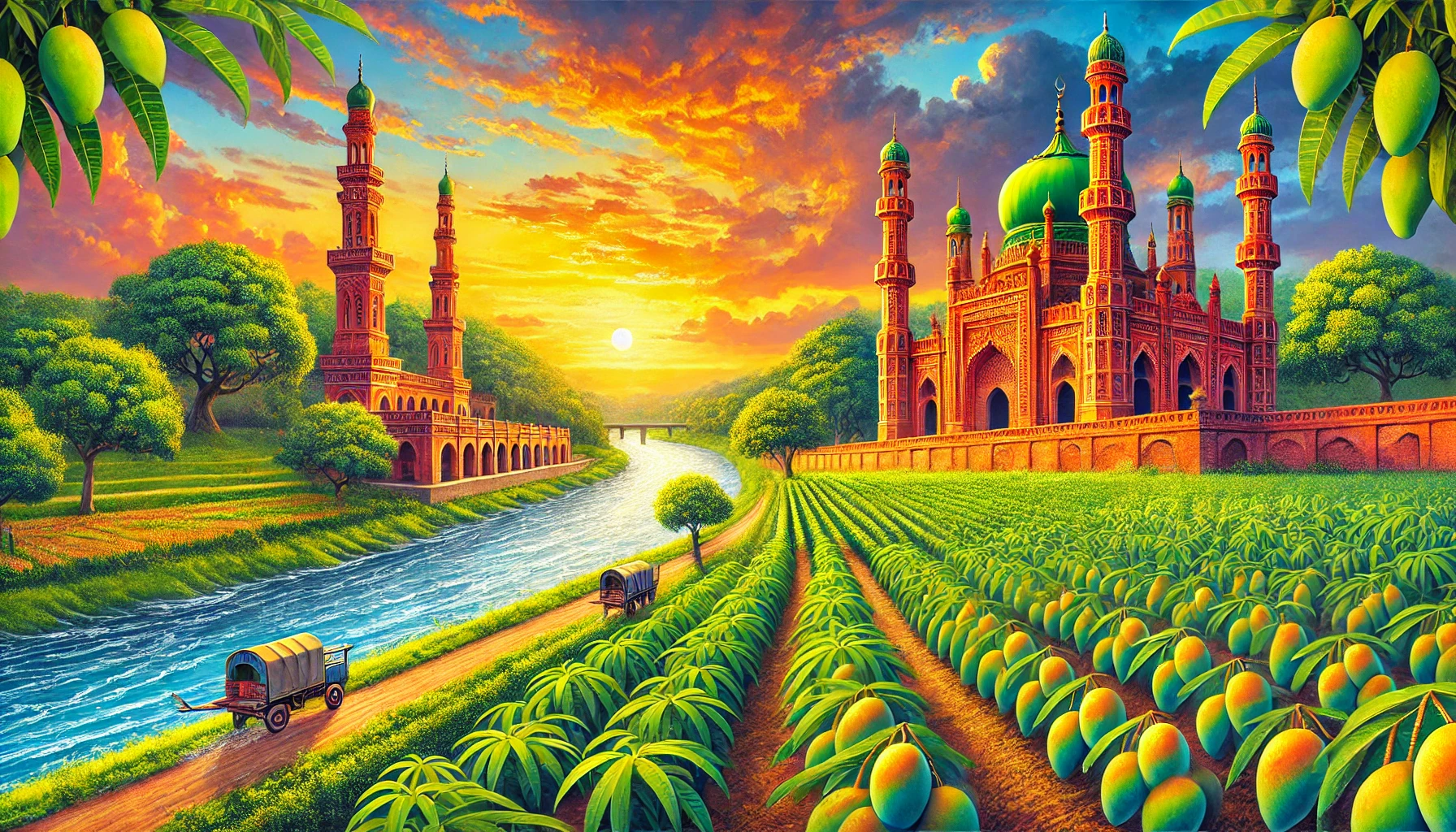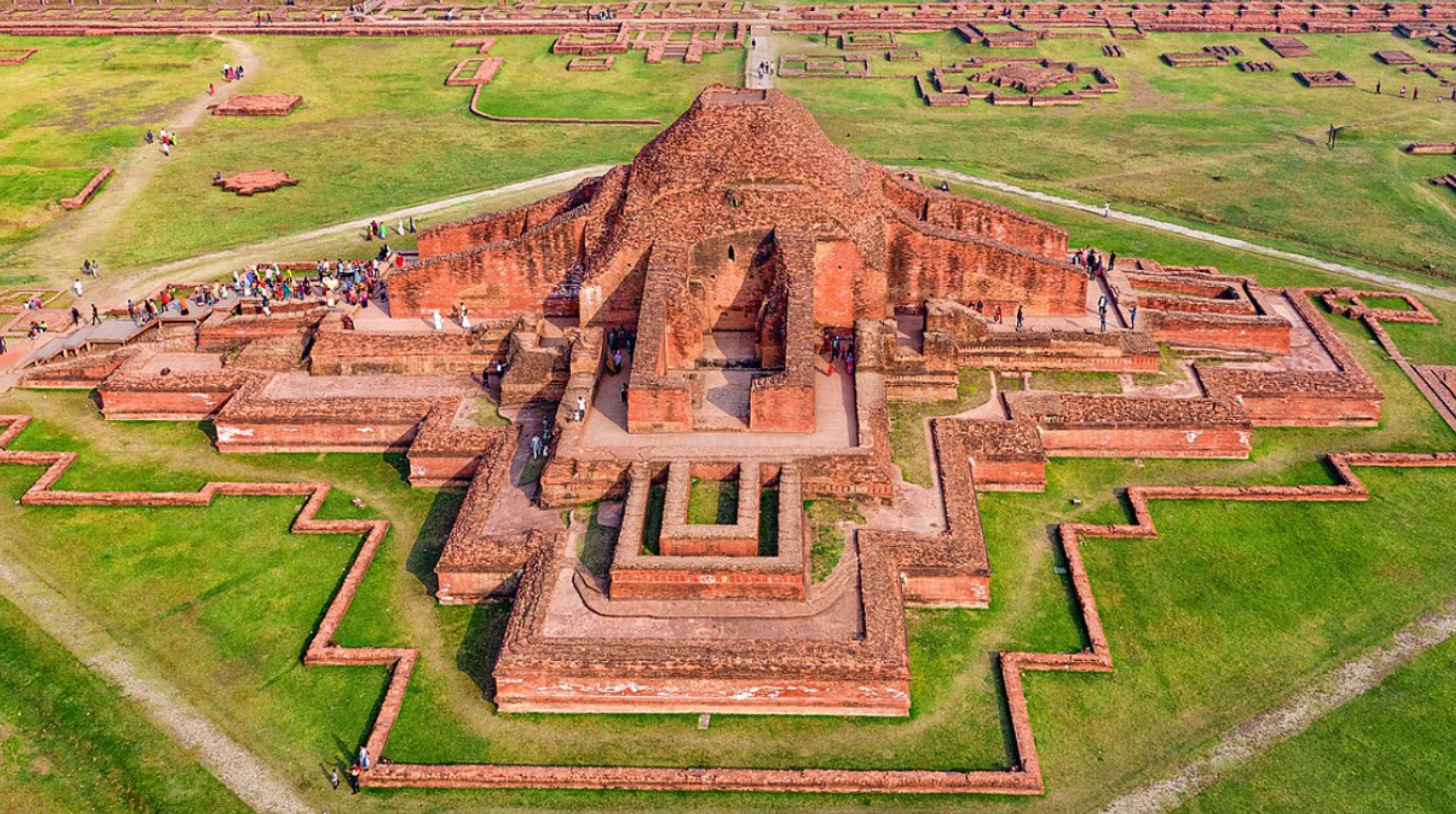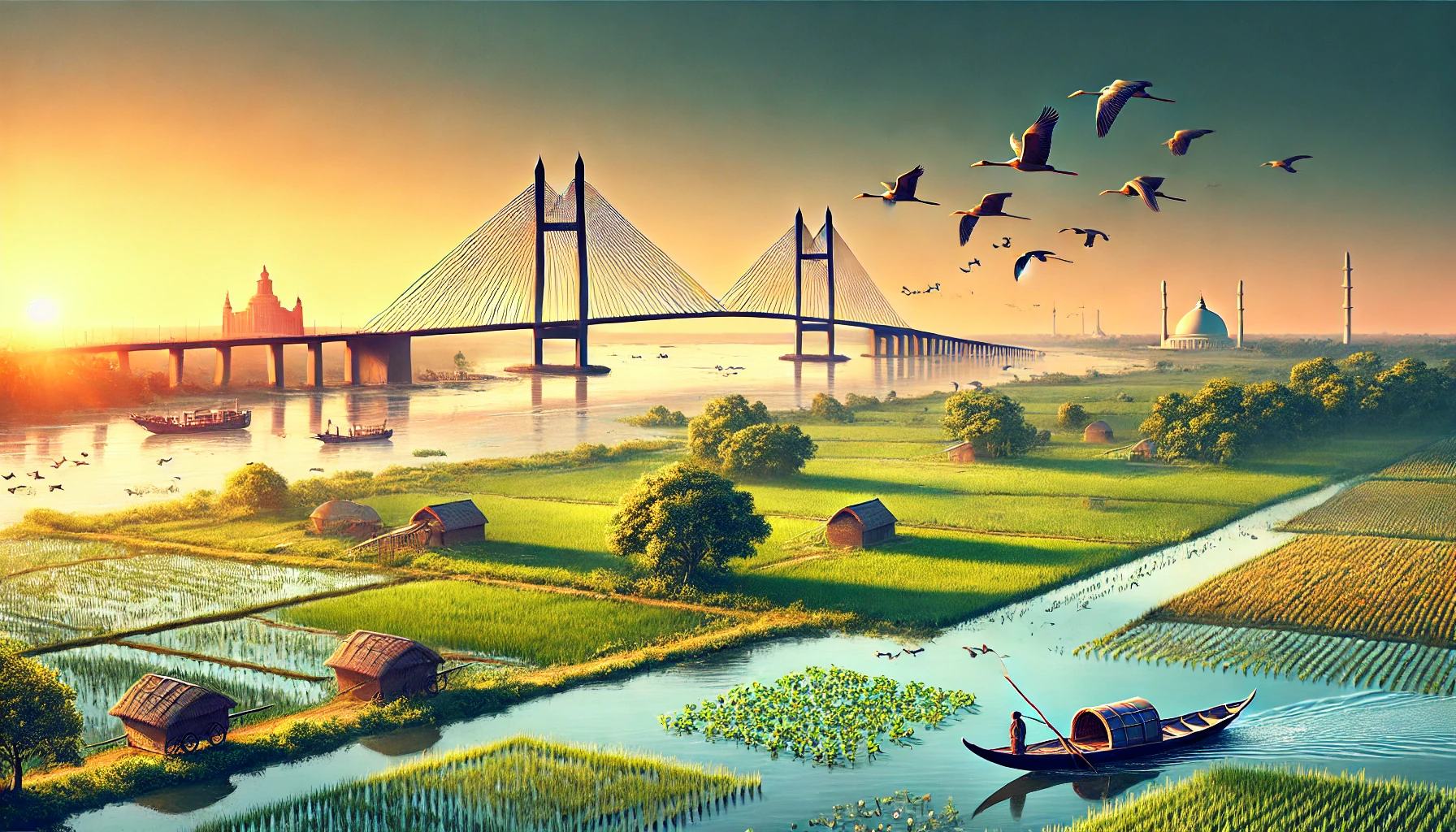Nawabganj, officially known as Chapai Nawabganj, is a district in the Rajshahi division of Bangladesh. Renowned as the “Mango Capital of Bangladesh,” the region is synonymous with vibrant orchards, historical landmarks, and a culture steeped in tradition. Nawabganj is a treasure trove of history, natural beauty, and agricultural prosperity, offering a comprehensive experience for visitors and historians alike.
Historical Background
The history of Nawabganj dates back to ancient Bengal. Once a part of the Gauda Kingdom, the region later flourished under the Sultanate and Mughal empires. Nawabganj was named in honor of the Nawabs who governed the area and played a significant role in its development. The remnants of their rule are still visible in the form of grand mosques, palaces, and other architectural marvels.
During the British colonial era, Nawabganj became a hub of trade and agriculture, thanks to its fertile land and proximity to the Padma River. Its historical significance is reflected in its monuments, archaeological sites, and cultural practices that continue to thrive today.
Exploring the Upazilas of Nawabganj
Nawabganj comprises five upazilas, each offering unique attractions and cultural insights:
- Chapai Nawabganj Sadar
- Key Highlights:
The central hub of the district, this upazila is known for its urban infrastructure and historical landmarks. Notable sites include the Sona Mosque, an exquisite example of Sultanate-era architecture. The Sadar area also hosts vibrant local markets selling mangoes, traditional crafts, and fresh produce.
- Key Highlights:
- Shibganj
- Key Highlights:
Home to the famous Tahkhana Complex, Shibganj is a treasure trove of Mughal-era architecture. This upazila is also dotted with lush mango orchards, providing a serene escape for nature enthusiasts. The markets here are bustling during the mango harvest season, drawing traders and tourists alike.
- Key Highlights:
- Nachole
- Key Highlights:
Nachole offers a perfect blend of history and natural beauty. Known for its contribution to the peasant movements during the colonial period, this upazila is a must-visit for those interested in the socio-political history of Bengal. Its green fields and quiet villages provide a peaceful retreat.
- Key Highlights:
- Bholahat
- Key Highlights:
Known for its scenic beauty, Bholahat features sprawling mango orchards, serene rural landscapes, and cultural richness. The Gomostapur Tea Garden in this region is a unique attraction, offering a glimpse into Bangladesh’s tea cultivation practices.
- Key Highlights:
- Gomostapur
- Key Highlights:
Gomostapur stands out for its terracotta art and archaeological relics. The Dighi (large ponds) in this region are both historically and ecologically significant, providing habitats for diverse flora and fauna.
- Key Highlights:
Iconic Attractions in Nawabganj

Tahkhana Complex
- Sona Mosque (Golden Mosque)
One of the most famous Sultanate-era structures in Bangladesh, the Sona Mosque is a masterpiece of terracotta and stone architecture. Its golden hue, intricate carvings, and historical significance make it a prime attraction. - Tahkhana Complex
Located in Firozpur of Shibganj, this site includes a mosque, a hammam (bathhouse), and other structures from the Mughal era. The complex reflects the grandeur and sophistication of Mughal architecture. - Mango Orchards
Nawabganj’s fame as the “Mango Capital” is well-earned. The district produces a variety of mangoes, including Langra, Fazli, and Gopalbhog, which are exported internationally. Visiting the orchards during mango season offers a delightful experience of tasting fresh, juicy mangoes straight from the trees. - Padma River
Flowing through the district, the Padma River is a vital lifeline and a scenic attraction. The riverbanks are perfect for leisurely walks, picnics, or watching breathtaking sunsets. - Choto Sona Mosque
Another architectural gem in Shibganj, this smaller version of the Sona Mosque offers intricate designs and a serene environment for history enthusiasts. - Barind Tract
A geographical feature unique to this region, the Barind Tract is known for its red soil, archaeological findings, and agricultural importance.
Culture and Festivals
Nawabganj’s culture is deeply intertwined with its agricultural roots. The annual Mango Festival is a significant event that celebrates the district’s famed mangoes. Traditional music, dance, and craft exhibitions during the festival provide a vivid portrayal of the region’s vibrant culture.
The district is also known for its traditional handloom weaving, pottery, and terracotta art, reflecting the artisanal skills passed down through generations.
Famous Personalities from Nawabganj
Several notable figures hail from Nawabganj, contributing to the fields of literature, politics, and the arts. Among them are:
- Alauddin Al Azad, a renowned poet and novelist.
- Abdur Razzak, a prominent political leader who played a key role in the country’s independence movement.
Culinary Delights
Nawabganj’s cuisine is a treat for the senses, with dishes that highlight local ingredients and flavors. From the aromatic biryanis to mango-based desserts, the district offers a delightful culinary journey. Traditional snacks like pithas (rice cakes) are also a must-try.
Conclusion
Nawabganj is a district that encapsulates the essence of Bangladesh—rich in history, culture, and natural beauty. Whether exploring its architectural wonders, enjoying the lush greenery of its mango orchards, or experiencing the warmth of its vibrant festivals, Nawabganj offers something for everyone. A visit to this district promises an unforgettable journey into the heart of Bengal’s heritage and charm.




